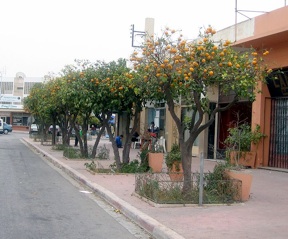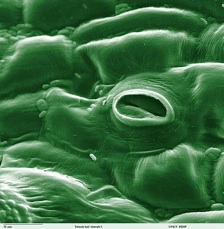Nutrition

As with many other plants related to C. sinensis, there are essential nutrients that the plant must be able to obtain in order to survive. The list of these nutrients include N (nitrogen), P (phosphorous), K (potassium), Mg (magnesium), Na (sodium), S (sulfur), Fe (iron), Mn (manganese), Zn (zinc), Ca (calcium), Cl (chlorine), B (boron), H20 (water), and CO2 (carbon dioxide). Each of these elements play essential roles in different life stages of the orange and are needed to grow properly. All of the nutrients besides CO2 are brought up by the roots a which receive their supply from the soil. CO2 is obtained from the atmosphere and is received by the plant through openings called stomata.
Certain parts of Citrus sinensis are important in the nutrition of the plant as a whole. The leaves are the site of photosynthesis, where sugars are produced that are essential in providing the rest of the tree with a usable energy source. Small holes in the leaves called stomata are the site of gas exchange which provide the tree with CO2 in order to carry out photosynthesis. Structures in the trunk of the tree called xylem and phloem are important vascular tissues that aid in transport. Phloem is responsible for transporting sugars away from the site of photosynthesis to areas of need. Xylem is responsible for transporting water and nutrients from the roots up through the tree.
The sweet orange is a great representative of the majority of plants because the orange utilizes the process of photosynthesis for obtaining energy. This process uses light energy from the sun, water, and carbon dioxide in order to produce sugars for use by the plant and oxygen as a byproduct. Not only does this process provide a usable form of energy for the plant it puts O2 into the air which is necessary for the survival of many organisms. In turn, organisms such as the Margay (Lepardus weidii), that use O2 for respiration, produce CO2 as a byproduct which is used by C. sinensis and other plants.
















